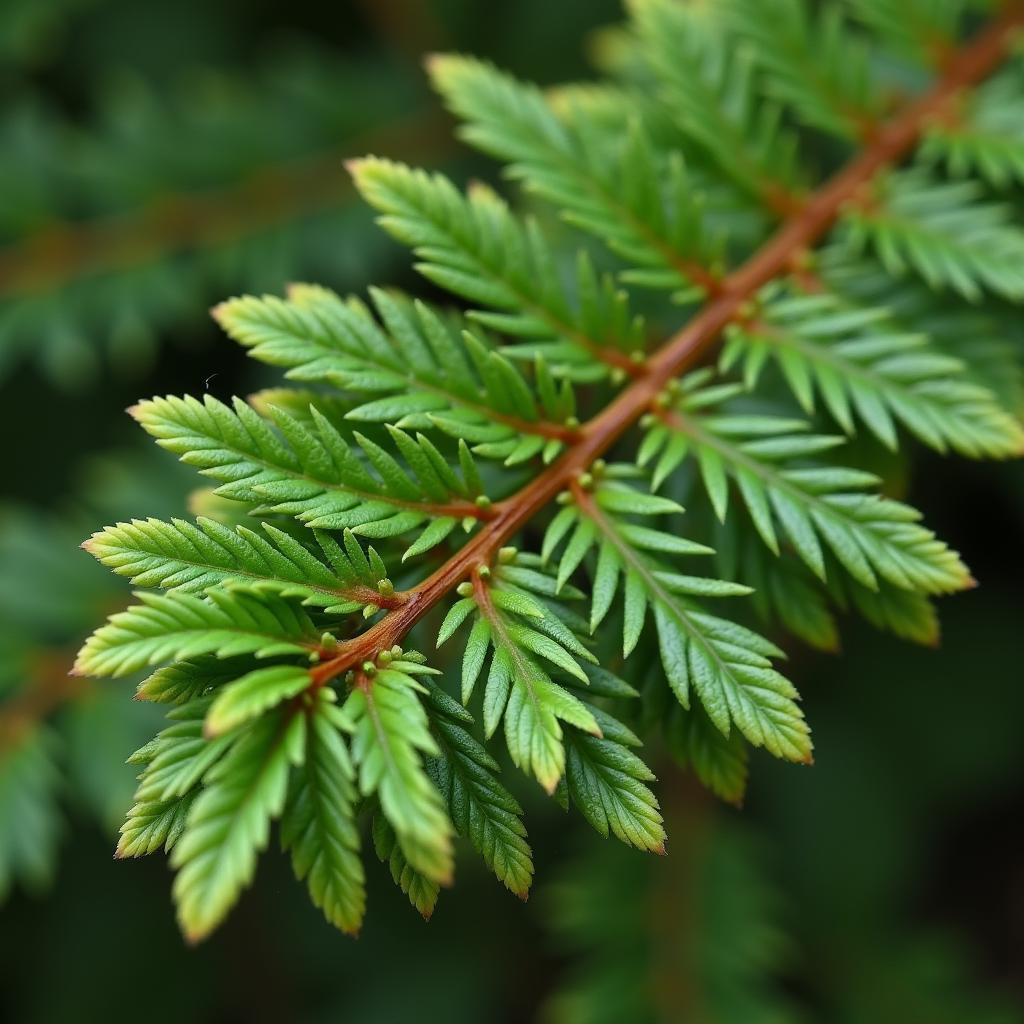Unraveling the Mystery of the African Fern Pine Tree
The African Fern Pine Tree, a captivating species native to the African continent, piques the curiosity of nature enthusiasts and botany aficionados alike. Often sought after for its unique fern-like foliage and elegant, pine-like structure, this tree offers a captivating blend of beauty and resilience.
Delving into the Characteristics of the African Fern Pine Tree
The African fern pine tree, scientifically known as Podocarpus gracilior, belongs to the Podocarpaceae family. Unlike true pines, which are coniferous trees, the African fern pine falls under the category of conifers. This intriguing species is characterized by its:
- Foliage: The tree derives its name from its delicate, fern-like leaves. These needle-like leaves, arranged spirally on the branches, create a soft, feathery appearance, setting it apart from its coniferous counterparts.
- Structure: The African fern pine typically exhibits a pyramidal or conical shape, reminiscent of traditional pine trees. Its strong, upright trunk supports well-defined branches that gracefully taper towards the apex.
- Size: This evergreen species can reach impressive heights, with mature trees often towering over 60 feet. Their impressive stature, coupled with their unique foliage, makes them a striking addition to any landscape.
 Close-up of African Fern Pine Tree Foliage
Close-up of African Fern Pine Tree Foliage
Unveiling the Habitat and Distribution of the African Fern Pine Tree
As its name suggests, the African fern pine tree is indigenous to the African continent. Its natural range stretches across several countries, including:
- Ethiopia
- Kenya
- Uganda
- Tanzania
- Malawi
Within these regions, the tree thrives in the montane forests and grasslands, often found at elevations ranging from 5,000 to 9,000 feet above sea level.
Exploring the Significance and Uses of the African Fern Pine Tree
The African fern pine tree holds both ecological and cultural significance in its native regions.
Ecological Importance
- Habitat Provider: The dense foliage of the African fern pine offers shelter and nesting sites for a variety of bird species.
- Soil Stabilization: Its extensive root system helps prevent soil erosion, particularly in mountainous regions prone to landslides.
- Carbon Sequestration: Like other trees, the African fern pine plays a vital role in absorbing carbon dioxide from the atmosphere, contributing to climate change mitigation.
Cultural and Economic Uses
- Timber: The African fern pine is highly valued for its durable and aesthetically pleasing timber. It’s often used in construction, furniture making, and for crafting various decorative items.
- Ornamental Tree: Due to its elegant appearance and hardiness, it’s a popular choice for landscaping and ornamental purposes, both in its native regions and other parts of the world with suitable climates.
“The African fern pine is a testament to nature’s artistry,” shares Dr. Anika Moti, a renowned botanist specializing in African flora. “Its ability to flourish in challenging environments while contributing significantly to the ecosystem underscores its remarkable resilience and value.”
Cultivating and Caring for the African Fern Pine Tree
For those interested in cultivating the African fern pine, here are some essential care tips:
- Sunlight: This tree thrives in full sun to partial shade.
- Soil: Well-drained soil is crucial for healthy growth.
- Watering: While drought-tolerant once established, regular watering is essential during the first few years.
- Pruning: Pruning is generally minimal, often limited to removing dead or diseased branches.
African Fern Pine Tree: A Symbol of Beauty and Resilience
The African fern pine stands as a captivating representation of the continent’s rich biodiversity. Its unique blend of delicate foliage and sturdy structure, coupled with its ecological and cultural significance, makes it a truly remarkable species.
FAQs
-
Is the African fern pine a true pine tree?
No, while its name might suggest otherwise, the African fern pine is not a true pine tree. It belongs to the Podocarpaceae family and is classified as a conifer.
-
Where can I buy an African fern pine tree?
Check with reputable nurseries specializing in exotic or African plants. You can also explore online plant retailers.
-
Can I grow an African fern pine tree in a pot?
While possible to grow in a pot initially, it’s essential to provide adequate space for its root system as it matures.
-
How long do African fern pine trees live?
The lifespan can vary, but they are known to live for several decades, with some individuals reaching over a century.
-
What are some common pests or diseases that affect African fern pine trees?
While generally resilient, they can be susceptible to pests like aphids and scale insects. Diseases like root rot can occur with improper watering.
For further assistance regarding African flora and fauna, feel free to reach out! Contact us at:
- Phone Number: +255768904061
- Email: kaka.mag@gmail.com
- Address: Mbarali DC Mawindi, Kangaga, Tanzania
Our dedicated customer support team is available 24/7 to answer your queries. Explore more captivating stories and in-depth information about the diverse wonders of Africa on our website. Don’t miss out on our insightful articles on African Grey Life Expectancy and intriguing details about the African Grey Parrot in Tirupati. Delve into the fascinating world of African parrots with our piece on About African Grey Parrot in Hindi and discover the range of African Grey Parrot Food for Sale. If you’re considering welcoming an African Grey into your home, make sure to check our guide on the African Grey Price Range.


